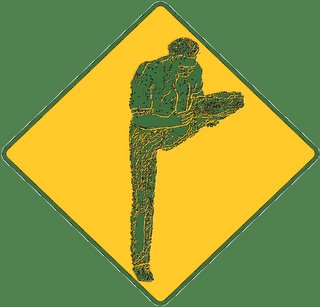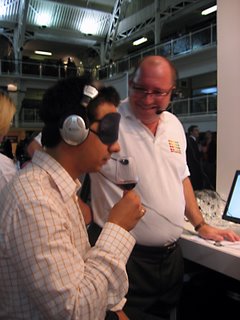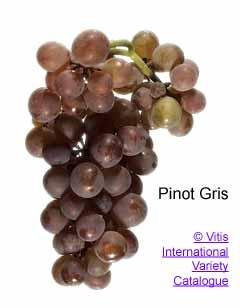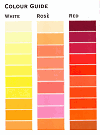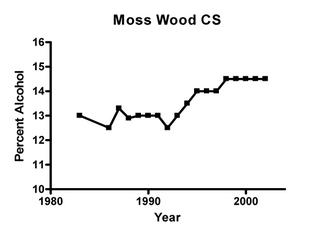The Clarendon Hills Tasting (or Finding an American Syrah)
The Saturday $5 tasting at the local wine shop was supposed to be Argentinean wines, but as I was told by the shop owner last week there was a change and they would be pouring
Clarendon Hills wines. This is the McLaren Vale winery that Robert Parker regularly anoints with overwhelming admiration. Parker’s publication,
The Wine Advocate, has allocated a specific review to Australian wines in issues No. 143, 148, 155, and 161. The Clarendon Hills single vineyard wines have been reviewed in each of those issues and very few of the recommended wines have scored below 90 pints. The praise both for the wines and the winemaker has been effusive ;
Roman Bratasiuk is one of Planet Earth’s greatest winemakers, Robert Parker, Wine Advocate #155 (Oct 2004).
My first experience with Clarendon Hills was on March 15, 1997. That tasting was of eight different Australian wines, and included two Clarendon Hills wines; the 1995 Clarendon Hills Grenache Old Vines Clarendon Vineyard, and the 1995 Shiraz. At that tasting I had rated the Clarendon Hills wines highly putting the Grenache in second place, in front of the Shiraz but both behind the 1992 Seppelt’s Dorian Cabernet. In recent years (i.e. after beginning the Shiraz eBlog ) I have only tasted the Moritz and the Liandra Syrah, both from the 2002 vintage. Each wine had a fried tomato (or tomato paste) character that I found unattractive. But even with my experience of those 2002’s the chance to taste through close to $300USD worth of wine for $5 was too good an opportunity to pass up.
The wines were poured and described by David Turcan (National Account Rep for Commonwealth Wine and Spirits, Inc. of Mansfield Massachusetts). David was quite knowledgeable about the Clarendon Hills wines. He even knew that Shiraz reached Australia in the 1820’s, although he wasn’t sure exactly how; the first importation of Shiraz vines was most likely by John Macarthur.
The wines had been decanted about 90 minutes before the tasting began and were not poured blinded, unfortunately.
2003 Blewitt Springs Grenache $47.99USDCherry red with very faint orange tinge. Smoke, licorice and cherry are the dominant aromas. Medium to full bodied with an attractive licorice note to the palate. Soft and smooth in the mouth with very good balance. Firm tannins precede the lengthy finish. 2, 2, 4.1, 10.0 = 18.1/20, 90/100. 14.5% alcohol.
2003 Kangarilla Grenache $47.99USDCherry red with red edge. Pronounced pepper, faint tomato paste and pleasant aromatic character that became licorice with time. Full bodied with a soft and supple mouthfeel and fine tannins. Very well balanced wine. 2, 2, 4.0, 10.2 = 18.2/20, 91/100. 14.5% alcohol.
2003 Brookman Merlot $51.99USDCherry red with faint orange tinge. More restrained with oak, tomaoto paste, faint anise and cedar; I could easily have been convinced that this wine contained some Cabernet. Full bodied with a soft and supple entry, very fine tannins and with an excellent carry of flavors onto the palate and the lengthy finish. 2, 2, 4.0, 10.2 = 18.2/20, 91/100. 14.5% alcohol.
2003 Sandown Cabernet Sauvignon $55.99USDDense cherry red with a red edge with just a faint tinge of orange. Clearly evident tomato paste with pepper, dusty oak (almost sandalwood) and underlying complex aromatic aromas. Again a soft and supple entry but with more forward tannins and acidity. The least well balanced wine, being a little disjointed, and closing down to dusty oak during the tasting. 2, 2, 4.1, 9.8 = 17.9/20, 89/100. 14.5% alcohol.
2003 Liandra Syrah $68.99USDDense cherry red with a faint orange tinge. Dominant tomato paste aroma over faint pepper and shy fruit flavors. Full boded with excellent mouthfeel and presence of flavors on the palate. Excellent balance of clean acidity and fine tannins capped off with a lengthy finish. 2, 2, 4.3, 10.1 = 18.4/20, 92/100. 14.5% alcohol.
Once I had made my notes on the wines I let the glasses sit while I went through another seven wines made up of whites and reds from a hodgepodge of varietals and countries. The last wine in that group was the
2003 Cayuse Syrah En Chamberlin ($59.99USD) from the Walla Walla Valley in Washington. A dense cherry red with a red edge, the wine had tremendous complexity with aromas of stewed dark fruits, violets, faint pepper and stewed quince. All those flavors explode on the palate and provide an exceptional mouth pleasing experience. The length of the finish on this wine makes you believe that it has actually taken up residence. Beautiful wine! What was most interesting was that this wine had a faint tomato paste character but it melded with a subdued ethyl acetate (EA) aroma to produce a sweet aromatic flavor that was very pleasing. (That’s the flavor your looking for Roman!) 2, 2, 4.4, 10.6 = 19/20, 95/100. 14.8% alcohol.
Put your money where you mouth is Michael. So I bought bottles of the Cailloux (2002 and 2003), Coccinelle [Ladybug], En Cerise [Cherry], and En Chamberlin. Whether I’ll get any more is questionable. The mailing list is full, and the wine shop allocation was 18 bottles, total!
What happened to the Clarendon Hills? Actually something interesting! The wine I left in my glasses became much jammier especially for the two Grenache (strawberry), the Cab had even more oak and the Llianda became port-like. But when David let me smell the Lliandra directly from the decanter there was that ugly tomato again.
 Its always cause for celebration when a Nobel Prize is won by Australian Scientists but the recent presentation of the 2005 prize for Physiology or Medicine to Professor Barry Marshall and Dr Robin Warren is of interest to this wine blog for several reasons. As Professor Staffan Normark said in the Presentation Speech of Marshall and Warren “Against prevailing dogmas, you discovered that one of the most common and important diseases of mankind, peptic ulcer disease, is caused by a bacterial infection of the stomach. Your discovery has meant that this frequently chronic and disabling condition can now be permanently cured by antibiotics to the benefit of millions of patients. Your pioneering work has also stimulated research all around the world to better understand the link between chronic infections and diseases such as cancer.”
Its always cause for celebration when a Nobel Prize is won by Australian Scientists but the recent presentation of the 2005 prize for Physiology or Medicine to Professor Barry Marshall and Dr Robin Warren is of interest to this wine blog for several reasons. As Professor Staffan Normark said in the Presentation Speech of Marshall and Warren “Against prevailing dogmas, you discovered that one of the most common and important diseases of mankind, peptic ulcer disease, is caused by a bacterial infection of the stomach. Your discovery has meant that this frequently chronic and disabling condition can now be permanently cured by antibiotics to the benefit of millions of patients. Your pioneering work has also stimulated research all around the world to better understand the link between chronic infections and diseases such as cancer.”
